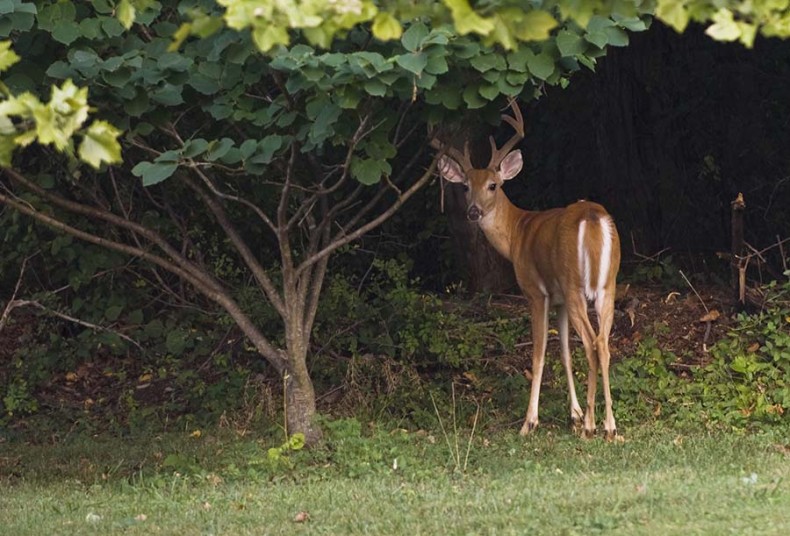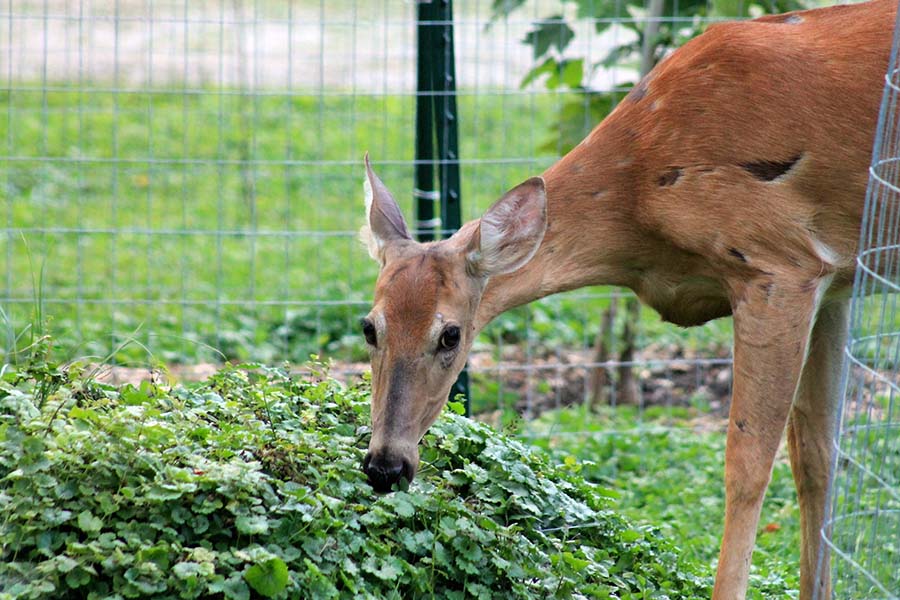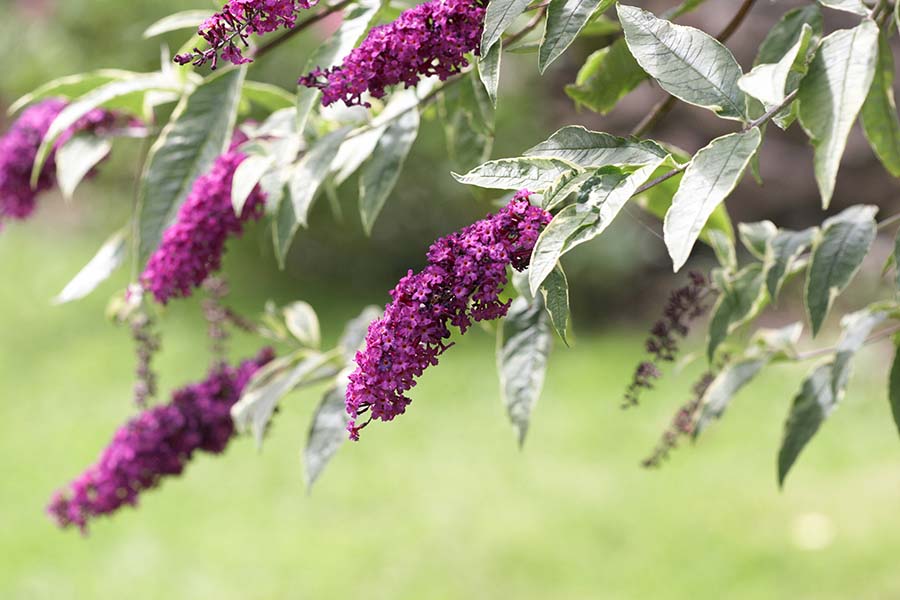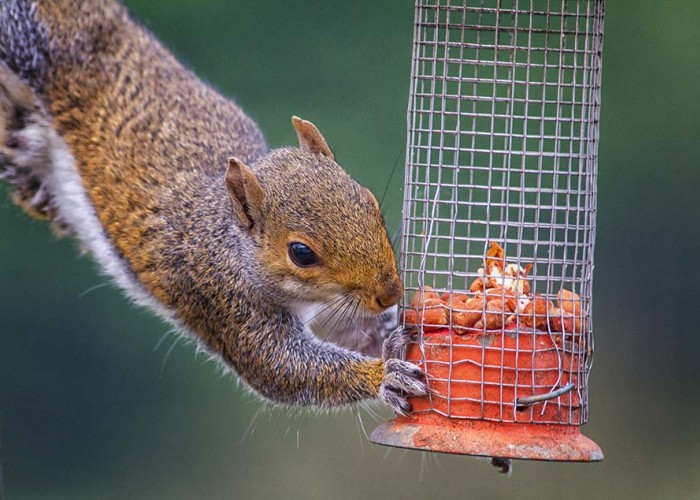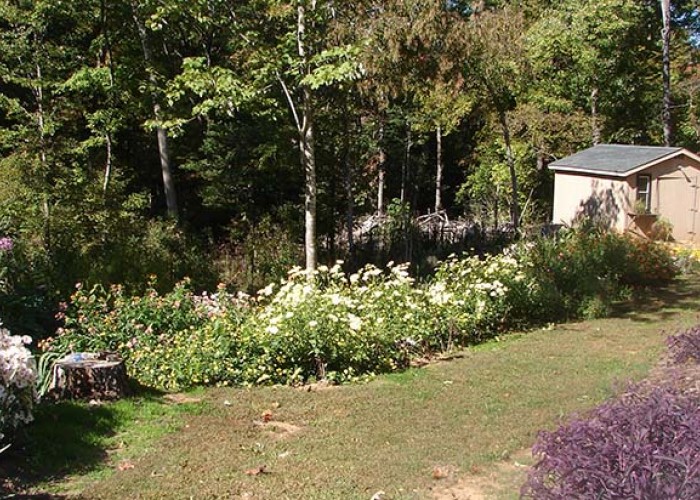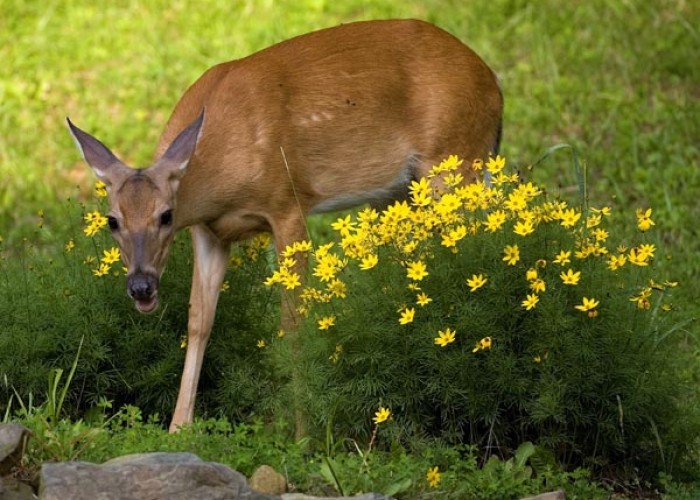Deer Me! What’s Eating Your Landscape?
Try these three methods to keep your yard off the menu
By Pamela A. KeenePhoto by Teddy Fisher
The succulent plants you so carefully tend in your garden are like an oasis in a desert — a feast for the eyes and stomach, waiting to be harvested at just the right time.
Sometimes, though, the fruits of your labor are prematurely usurped by a garden intruder impressed by what it sees as a gourmet, all-you-can-eat buffet.
“There’s no foolproof method for keeping deer from eating your landscape if they’re hungry enough, but there are some ways to minimize the damage,” says gardening expert Joe Lamp’l, creator and host of “Growing a Greener World,” the award-winning PBS television series. “It takes persistence and a few tricks, but you can keep deer at bay.”
There are three primary strategies to keeping deer at bay, according to Lamp’l: exclusion through physical barriers, repellents and making appropriate plant choices.
Caught in the act: A deer picks through greens in a well-tended human garden. (photo by Teddy Fisher)
Fence them out
The most reliable way to address a deer issue is to create a physical barrier or a way to exclude deer from your landscape, Lamp’l says.
“Building a fence around your vegetable garden will do a great deal to reduce deer damage, but not just any fence will do,” he says.
Lamp’l suggests building a double, three-strand fence, like those used for livestock protection. Mount plastic insulators on 36-inch wooden, fiberglass or metal stakes. Make two concentric circles around the area, 3 feet apart. String the stakes in each circle together with wire strands, placing the wire in the outside circle, 18 inches from the ground. Then put two strands on the inner stakes at 10 and 24 inches. Electricity can be added (either through solar power or a battery-operated source), but Lamp’l says that is not necessary in most cases.
“A deer’s depth perception is not good, so they will sense the presence of the two fences, but will be very unlikely to attempt to jump both,” says Michael Mengak, wildlife specialist professor at the University of Georgia. “You’ve created a visual and physical barrier against them without putting up an unsightly, stockade-style fence. A deer may try to jump the fence, but it won’t be able to clear both circles. It will most likely jump back out than attempt to cross the inner fence’s 24-inch barrier.”
If a double fence is not practical from a space standpoint, he suggests building a standard fence from posts and chicken wire, woven field wire or welded mesh wire at least 8 feet tall. Make sure the fencing is tight against the ground. Deer will not burrow, but they will look for an easy way to go under it.
Individual plants or smaller plant groupings can be protected by draping them with lightweight netting. Loosely secure the netting around the base of the plant to prevent the deer from nibbling on the leaves.
Turn to repellents
Frustrated gardeners have resorted to a variety of techniques to try to deter Bambi and friends from foraging and grazing on prized roses, vegetables and hydrangeas: Soap shavings, aluminum pie pans suspended on string, motion-activated lights, water sprinklers and even human hair clippings sprinkled around gardens. Others have tried crushing garlic, concocting a mixture of fragrant herbs or spraying capsaicin oil onto plants to keep the deer away.
“Some of these methods may work for the short term, but deer are creatures of habit and they’ll adjust to these attempts to add a human scent to frighten them,” explains Neil Soderstrom, author of “Deer-Resistant Landscaping: Proven Advice and Strategies for Outwitting Deer and 20 Other Pesky Mammals.”
Soderstrom says commercially available repellents have a higher success rate, but the key is to alternate their use.
“The odor will dissipate over time, so you must be diligent in applying them every 10 days or so, and after it rains,” he says.
The process takes several weeks, so it is important to use a spray on the foliage the first few weeks.
Most box retailers and nurseries offer a choice of products in liquids, concentrates or powders. Recognized brands are Liquid Fence, Deer Away, Deer Out, Deer Stopper and Hinder. They are applied directly to leaves and the stem to create smells and taste offensive to deer.
Repellex offers two types of repellents: a liquid spray applied to the plants and leaves, and systemic tablets or granular forms put into the soil, then absorbed into the plant, making it bitter to animals. When shopping for these, completely read the labels and cautions before using to ensure the product is safe when used on fruits and vegetables.
For an organic deer repellent that is marketed as fertilizer, try Milorganite — a wastewater treatment byproduct that has been produced by the Milwaukee Metropolitan Sewerage District for more than 90 years. The small pellets are the result of recycling nutrients in the city’s wastewater by using microbes that are then kiln-dried, bagged and sold. The organic nitrogen-based slow-release fertilizer produces an odor that is offensive to deer.
“I’ve seen it used as a fertilizer and deer repellent, and the deer don’t seem to browse in areas treated with Milorganite,” Lamp’l says. “I find it to be very effective.”
Change the menu
In the wild, plants develop defenses such as waxy leaves or prickles that make them more adapted to surviving grazing. Even when they do get nibbled, native plants are more likely to survive than the succulent plants we typically plant in our gardens.
“Deer are looking for the highest-quality food, and our yards often offer the best smorgasbord,” says Dana Sanchez, a wildlife specialist for Oregon State University Extension Service. “We’re often selecting plants from other parts of the world that didn’t get to learn through evolution about the herbivores in our ecosystem.”
Choosing the right kinds of plants — those deer typically do not like — can reduce the likelihood of free-range foraging in your landscape.
“Native plants are among the best bets for your garden and landscape,” Lamp’l says. “Native plants evolved at the same time as your area’s wildlife and developed their own resistance to deer feeding to survive.”
Some plants are more appealing to hungry deer than others. For example, daylilies, hydrangeas, hosta, azaleas, rhododendron, roses, fruit trees, arborvitae and Leyland cypress make for attractive food sources. Garden experts recommend not planting these if you have a high-traffic deer area.
Instead, look for plants and trees on the less-likely-to-be-eaten list, including boxwoods, hollies, ornamental grasses, hellebores/Lenten roses, ferns, butterfly bushes and cedar trees. A full list of deer resistant plants is available from NC Cooperative Extension.
One method of dealing with squirrels: Call a truce and give them their own feeder. (photo by Mike Teegarden)
Sometimes combining deer-desirable plants with those deer do not like can reduce the chance of having your colorful flower beds mowed to the ground. Mixing marigolds with pentas or lantana or Angelonia with impatiens tends to keep deer from grazing. Some gardeners intersperse pansies with spring onions to make deer work harder to sort out the plants they like to eat.
“Use ‘decoy plants’ around your landscape to attract deer away from your valued plants,” Lamp’l says. “For instance, give up part of your property to deer-friendly plants in hopes that they will focus on this readily available food source. However, if the deer are hungry enough, they will eat anything, so no method is completely effective.”
As creatures of habit, deer tend to feed in the same areas for generations, which can be problematic when new neighborhoods spring up in their territory, compromising tried-and-true food and water sources.
“The key is making sure we have a way to live with wildlife,” Mengak explains. “It may mean habitat modification, but it’s important to strike a balance between the needs of people and the needs of animals.”
If you can’t beat them, join them.
No matter what solution you choose, keep in mind the well-being of these animals. They need to eat, too. For example, call a truce with the squirrels and buy them a feeder. You can find ones designed to look like picnic tables, porch swings, even a squirrel tilt-a-whirl. The same approach can be taken for deer, turkeys and raccoons.
Sources: Wild Birds Forever Nature Store, the Humane Society of the United States and About Home
About the Author
Pamela A. Keene is a freelance writer and photographer based in Atlanta.-
More ways to keep pests out of your garden
-
Share this story:

